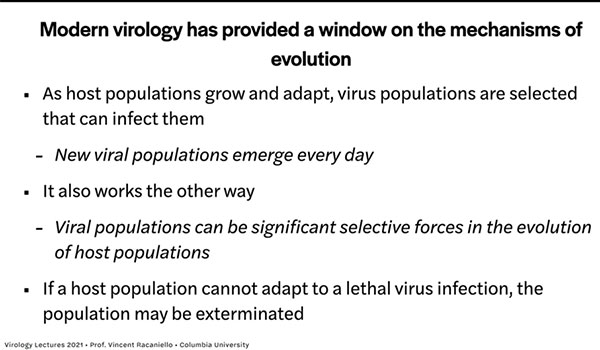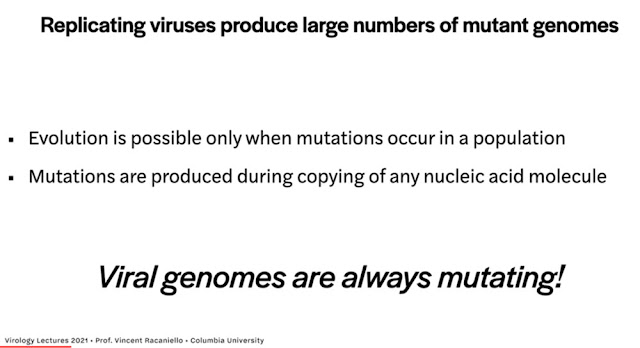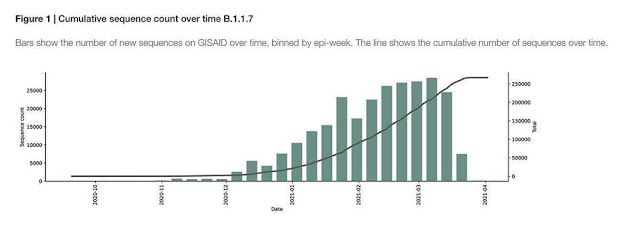Greetings from Palmia Observatory
Well here we are packing our bags for our road trip in search of the Zodiacal light in the dark skies around Needles, CA., and at the same time unpack our backs for the September cruise from Romania, in search of vampires, up the Dneiper River, from Odessa, to Kiev, Ukraine, which has been canceled, but in the meantime we can report on observing opportunities in Boca Chica and look into some science of viral mutations and variants of concern.
We saw this twitter feed from Everyday Astronaut showing a possible viewing location, assumed to be from the high rise hotels on South Padre Island. You can just make out the start of the fireball from one of the recent Starship test hops. Hmm, this might be a convenient place to stay while waiting for a launch. At least we get some information about the field of view as seen from about six miles from the Boca Chica launch site. Thanks Everyday Astronaut!
 |
| View of SpaceX launch site in Boca Chica from South Padre Island (Source: Everyday Astronaut) |
We rely on other tweets covering the action in Boca Chica, so here is the Resident Astronomer in a hoodie with an image of the Starship with three Raptor engines. I purchased this hoodie from @WhatAboutIt, as a gesture of support to Felix for keeping us up on the latest news from Boca Chica. Thanks Felix (and of course @BocaChicaGal, Mary) for all of the reporting!
 |
| Resident Astronomer enjoying wine and new Starship hoodie on the patio (Source: Palmia Observatory) |
In the meantime, we depart from our normal astronomical topics, of interest to the astronomer wannabes and physicist wannabes, and have a brief look into the nature and science behind the COVID-19 variants of concern. In past blog posts we have delved with the physics of masks and the spread of viral particles from the breath of the infected and to the physics and scientific principles of the instrumentation and tests used to verify and sequence of viruses. Now we turn to a brief review of viral mutation and to the fear about the effectiveness of currently available vaccines.
How effective will the current vaccines be as the virus continues to mutate. Our go to expert in this area is Dr. Paul Offit, infectious disease specialist with Penn's Perelman School of Medicine and the Children’s Hospital of Philadelphia. He says all is fine so far, but if and when we start to see illness in people who have already been vaccinated, then it is time to worry, but in the meantime, there is no evidence of that, so don't worry!
But for now, let's go back and take a look at the science of variants. What is a variant? A variant is the virus as now found in the population that differs in its genetic coding from the original time it was discovered. The viral RNA or DNA is a long sequence of nucleotides strung together one after another.
We are faced with different nomenclature used to describe the variants. One of the common forms is the legacy form, for example, here as the B.1.1.7 variant, commonly called the UK lineage, because if was first sequenced in the UK. So, don't go off and say this description is denigrating to the people of UK, because it just is associated with where the variant was first isolated, not that people there are at fault. The screenshot also shows the number of samples sequenced by country too.
For me, I don't follow the lineage way of naming the variant, but prefer instead to use the other nomenclature that describes the location in the nucleotide chain where the mutation has occurred. Note how in this case the B.1.1.7 variant is also described as N501Y and P681H. The first letter is the nucleotide that is changed at the location identified by the integer, and the 2nd letter is the symbol of the nucleotide that replaces the original one. The "N" stands for the amino acid, asparagine, and the "Y" for tyrosine. The number "501" means that the mutation occurs in the 501st location of the RNA. Similar translation for the other variants.
 |
| COVID B.1.1.7 variant sequence count with mutation location (Source: cov-lineages.org) |
Now many people assign some sinister motive to the mutants, but in reality it just boils down to mutations in the genetic coding that occurs naturally and randomly. The science of virology can see evolution happening on a very rapid schedule.
 |
| Modern virology and evolution (Source: Vincent Racaniello, "Virology Lectures 2021) |
It turns out that RNA, as seen in the SARS CoV-19 virus, tends to mutate much more frequently than DNA. So, RNA viruses tend to mutate much faster than other viruses that are built around DNA.
 |
| Viral genomes are always mutating (Source: Vincent Racaniello, "Virology Lectures 2021) |
This four drivers of viral evolution are outlined below. The faster mutation rate in RNA viruses means that they are especially susceptible to higher mutation rates and evolution effects on fitness and survival. The effective reproductive time for viruses can be in the 15-20 minute range. This means that within a period of 6-8 hours, the case for just one mutation, it could be increased to a population of now one million. Next let's look at what the expected number of random mutations per RNA molecule.
 |
| Main drivers of evolution in viruses (Source: Vincent Racaniello, "Virology Lectures 2021) |
We can quantify the rates of evolutionary change by examining the mutation rate as measured in different type of viruses. Take a look at the screenshot below, taken from Vincent Racianello's lecture series, "Virology Lectures 2021, given to Columbia U. med students.
The mutation rate for RNA viruses has been determined to be about 10 to the minus 3, or about one out of thousand nucleotides per nucleotide per generation. For the current SARS CoV-19 virus, which has about 29,811 nucleotide base pairs. So, based on the typical mutation rate, we should expect to see random mutations at about 29 nucleotides per generation. Most of these mutations will be single nucleotide substitutions and most of them are probably not important and have no effect, pro or con on the viability of the virus. But as we have seen in the previous section, the substitution of of the "N" at position 511 for a "Y" amino acid, has a beneficial effect for the virus, either affecting its transmissibility or ability to survive and divide and propagate in its environment.
 |
| Mutation rate among different virus types (Source: Vincent Racaniello, "Virology Lectures 2021) |
When epidemiologists look at how this particular genetic sequence survives and travels through the population, they can get a sense as to the benefit and fitness of that particular mutation. In this next screen shot you can see the collected data showing how the number of identified patients with that particular mutation variant are found in the general population. We note how in December 2020 there were only about 1000 identified samples of the variant, and yet by March 2021, about 30,000 individuals with that variant were found. Initially, one might think that this increased in detection might be due to increased testing in the population, but later this was ruled out in favor of the mutant strain gaining in numbers because it was spreading through the population.
 |
| Cumulative sequence count for COVID B.1.1.7 variant (Source: cov-lineages.org) |
The article on the cov-lineages.org website goes on to look at how the variant was spreading from its initial finding in the UK to other countries around the world. In this next chart you can see how the variant spread to many other countries.
 |
| Sequence count by country for COVID B.1.1.7 variant (Source: cov-lineages.org) |
The epidemiologists then looked at how the variant might be spreading. In this next screenshot you can see how the amount of disease associated with the variant is correlated with the number of airline flights to other countries.
This example of how epidemiologists go about tracking the spread of disease is pretty interesting.
 |
| Air travel from London and COVID B.1.1.7 variant count (Source: cov-lineages.org) |
So, that is our little review of viral variants and mutation and evolution. We see that collecting data and analyzing data in disease control is key to controlling the spread of the disease. Next time we will return to more about collecting astronomical data and hope to show some success with tracking down the Zodiacal light.
Until next time, here from our burrow, stay safe, as we recover more of our freedom,

No comments:
Post a Comment